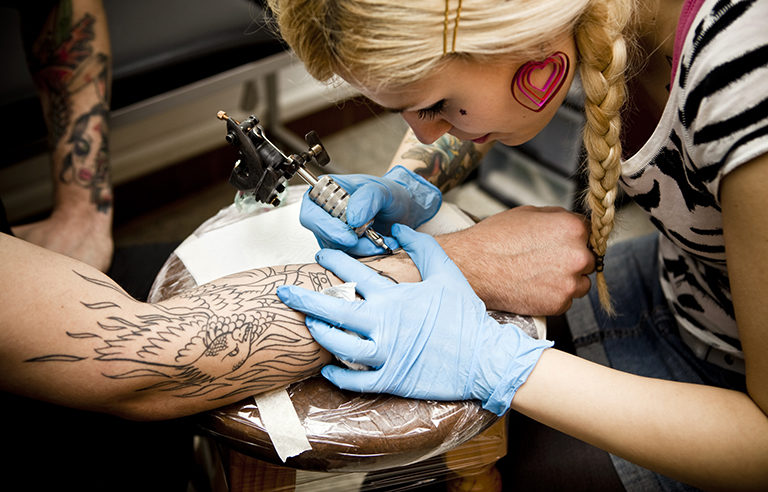Tattoo artists at risk for musculoskeletal discomfort, study finds

Photo: balono/iStockphoto
Columbus, OH – Tattoo artists typically sit for long periods of time, often in uncomfortable positions, increasing their risk for body pain, according to a new study from Ohio State University.
For the study, 10 tattoo artists wore electrodes that tracked their muscle activity as they worked. The electrodes collected data for 15 seconds every three minutes during a tattoo session, which lasted one to three hours. The researchers evaluated each artist’s posture every five minutes using a standardized observational assessment tool and took a photo of each observation.
All of the artists surpassed the recommended exertion limits to avoid injury in one or more muscle groups, particularly in the trapezius muscles in the upper back, which can result in neck and shoulder pain. Some artists eclipsed recommended limits by up to 25 percent. “Twelve-month discomfort prevalence” was higher than 50 percent in the artists’ necks, shoulders, hands, wrists, and upper and lower backs, according to the study abstract.
National ergonomic guidelines have not been created for tattoo artists.
“There’s no such thing as an official ‘tattoo chair,’ so artists adapt dental chairs or massage tables to make a client comfortable, and then they hunch over the client to create the tattoo,” Carolyn Sommerich, director of the university’s Engineering Laboratory for Human Factors/Ergonomics/Safety, said in a press release.
The researchers offered several tips to help tattoo artists work more comfortably:
- Try different types of chairs to sit in while working.
- Support the arms and back.
- Change positions while working.
- Take more frequent breaks.
- Use a mounted magnifying glass instead of leaning in to see work.
- Request the client move into a position that is more comfortable for both the client and the artist.
“If the client can stand or maybe lean on something while the artist sits comfortably, that may be a good option,” Sommerich said in the release. “Switch it up once in a while.”
The study was published in the January issue of the journal Applied Ergonomics.
Post a comment to this article
Safety+Health welcomes comments that promote respectful dialogue. Please stay on topic. Comments that contain personal attacks, profanity or abusive language – or those aggressively promoting products or services – will be removed. We reserve the right to determine which comments violate our comment policy. (Anonymous comments are welcome; merely skip the “name” field in the comment box. An email address is required but will not be included with your comment.)

